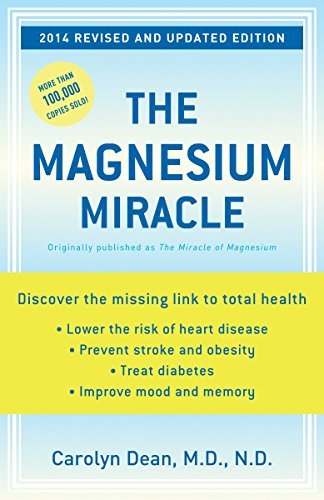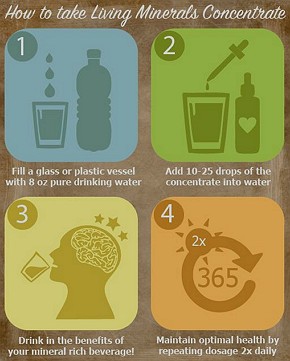
or years, nutraceutical researchers have worked
at improving the bioavailability of man's most important minerals -- focussing primarily on those that most
people consuming a Western Diet would be deficient in.
ARC Living Minerals is the
latest advance in this quest, offering
the fastest possible way to achieve mineral sufficiency for the broadest possible
number of users.
Minerals: The Body's
Building Blocks

Minerals are essential for life. They are the building blocks
that the body's uses to create structures and maintain their integrity. Each cellular function and process
in the body requires specific quantities of key minerals. The general health and welfare of the body can
be traced to balance and mineral availability. Minerals are elements that originate in the earth and cannot
be produced by living organisms. Plants obtain minerals from the soil, and most of the minerals in our diet
come directly from plants or indirectly from animal sources. However, with the demineralization of the soils
by the industrialized agricultural, they are no longer present in the necessary amounts in the food we eat.
 Ingredients:
Ingredients: Purified, ionized, structured water,
magnesium chloride, potassium chloride, sodium chloride, and calcium chloride; over 80 trace minerals
(from humic and fulvic acid) -- all ionized for maximum absorption
 Recommended Dosage:
Recommended Dosage: Take 10 to 25 drops, twice a day, for best results.
(
Preparation instructions are below.) Most people take 10 drops, twice a day, which amounts to
20 drops (or 1 ml.) daily. At this rate of consumption, one bottle lasts 30 days.
(Those preparing for an athletic event can take as much as 5 ml. -- 1 teaspoon -- per day.)
Note: When establishing daily values of minerals, the standard that is used focuses on elemental measurements rather than
taking into account that all minerals are different based on their combination. For example, both magnesium sulfate and
magnesium chloride, two very different forms of magnesium, are both only measured for their magnesium content rather than an
actual measuring of the available magnesium. Based on the stability constant scale, 1,000 mg. of magnesium sulfate would give
you 80 mg of magnesium that you can actually assimilate. One gram of magnesium chloride would give you one gram of assimilable
magnesium, but because the scale is only measuring elemental magnesium both are measured at one gram of magnesium.
 Precautions:
Precautions: Not to be taken by users under
the age of 12. Keep out of reach of children. This product should be used as a nutraceutical
aid and not as a source of food. Do not exceed the recommended dosage. If you are taking one
or more pharmaceutical drugs, consult with your physician before taking this product.
 Mineral Nutrient Content:
ARC's original label
Mineral Nutrient Content:
ARC's original label clearly indicates
mineral content (in mg.) along with recommended daily allowances. Please follow the instructions
for use
below.

Magnesium: The Most
Critical Missing Mineral

Mineral deficiencies are common in the work of all
credible naturopaths and herbalists. In working with a wide variety of degenerative diseases,
we see them routinely: potassium, iron, iodine, zinc, selenium, chromium,
silicon (
used to build calcium). These are among
the most common minerals for which disease-causing
deficiencies are seen. It is a problem
affecting billions.

However,
among the most critical is magnesium and it is a
very widespread and underrecognized problem. In her work, Carolyn Dean, M.D., identifies 56 medical conditions that
"have a direct clinical correlation with magnesium deficiency and respond to magnesium treatment." For the sake of
brevity here,
we list these conditions in alphabetical order on a separate page.
Those wanting more in-depth information we encourage customers to read the paper,
Magnesium in Man: Implications for Health and Disease, published in 2015.

The most prominent mineral in ARC is magnesium simply because this is the
most common mineral deficency.

Preparation: Easy to Use

As you can see from the chart at right --
(click to enlarge)
-- preparation is easy and straight-forward:
- Fill a glass or plastic vessel with 8 oz. of pure drinking water.
- Add 10-25 drops of Arc Living Minerals into the water.
- Drink the entire preparation.
- Maintain optimal health by repeating dosage 2x daily.

You'll find that the resulting
preparation has a alkaline mineral taste, but nothing disagreeable.
Moreover, you can add stevia or a small amount of money if taste ever
becomes an issue.


ARC & Better
Water Absorption

People have gotten so used to taking their
minerals in pill and capsule form that they are not aware that minerals, particularly magnesium,
are best absorbed from water. A 2002 study demonstrated that
mineral water high in
magnesium is a reliable source of magnesium. (This was confirmed two years later with
a study on a particular kind of mineral water. The study was entitied,
"
Absorption and effect of the magnesium
content of a mineral water in the human body."

Taking ARC with water not only helps rehydrate the body (in an era
where most people are mildly dehydrated anyway), but it acts as the best carrier for the balanced, ionized minerals
that are at the heart of the ARC formula and
process.

Therapeutic Magnesium

Therapeutic amounts of magnesium allow you to not only take in enough for your daily needs,
but, in fact, allow you to start sending magnesium to the body's reserves, located medium term in the tissues, and long term
in the bones. Only 1% of the body´s magnesium is found in the blood, which is the immediate release magnesium to keep your
vitals going, heart pumping, etc. Marathon runners have been found to have up to 1.7 times the magnesium value in the blood
when they finish a race. At that point, they are low in sodium and potassium, so the presumption behind Gatorade& is
that runners don't need magnesium (as there is so much in the blood), and thus Gatorade& does not have magnesium in
their mix. However, the opposite is true.

Your body when under such physical stress needs MORE magnesium to keep your heart
pumping, so it takes whatever it can from the tissues and bones, to avoid a system collapse. This then leads to cramps
(as the medium term reserves are depleted) and in the long run, bone structure issues. Therefore, the supplement amounts
will meet your daily need, but will not replenish yourt reserves.

For people with magnesium deficiencies, they should take more than they use every day.
Magnesium is depleted by stress hormones, exercise (energy creation through the ATP's Krebs Cycle), even through the intake of
drugs for depression, anxiety, etc. Carolyn Dean believes that it will take between 6 to 9 months to replenish your reserves
if you have those issues and are taking about 300 mg/day of magnesium. So, anywhere from 4 to 10 ml of ARC Living Minerals
will give you the therapeutic dosage. 1 to 3 ml will give you the daily dosage for different needs. If you are engaged in sports,
you should take anything above 2 ml to experience the results. Considering that the assimilability of ARC Minerals is close to 100%,
in order to get the same amount of magnesium from a 500 mg dosage of another magnesium supplement that is only assimilable at 15%
(some go up to 25%), you would need to take 1633 mg/day of such a magnesium. A sure ticket to spend your day on the toilet
and
lose it all.
The Role of the Other Minerals

The other minerals in the mix are there to make the magnesium 100% bioassimilable,
as well as supply you with other minerals that you need, though not in the amounts that are as critical as magnesium,
because potassium, calcium and sodium are much more readily available in our diet than magnesium is.

Just as an example, one banana gives you 345 mg of potassium, and then we eat all
sorts of potassium-rich foods such as bananas, oranges, cantaloupe, honeydew, apricots, and grapefruit. Some dried fruits,
such as prunes, raisins, and dates, are also high in potassium, as well as cooked spinach, cooked broccoli, potatoes, sweet
potatoes, mushrooms, peas, cucumbers, zucchini, eggplant, pumpkins, and leafy greens -- all part of regular diets, so most
people don't suffer from potassium deficiency (with the exception of cancer patients). Only after doing sports and other
intense physical activity are potassium stores depleted, but most have a magnesium deficiency. Calcium is another food-type
that is high in our usual diet, as is sodium, so those values are not as critical as having magnesium.
Nonetheless, if you don't include those elements, any potential deficiency will be dealt with, especially for the
cardiovascular system (the heart needs all these minerals to work properly), but it's the organ with the highest amount of
magnesium of all other organs, at about 7%).